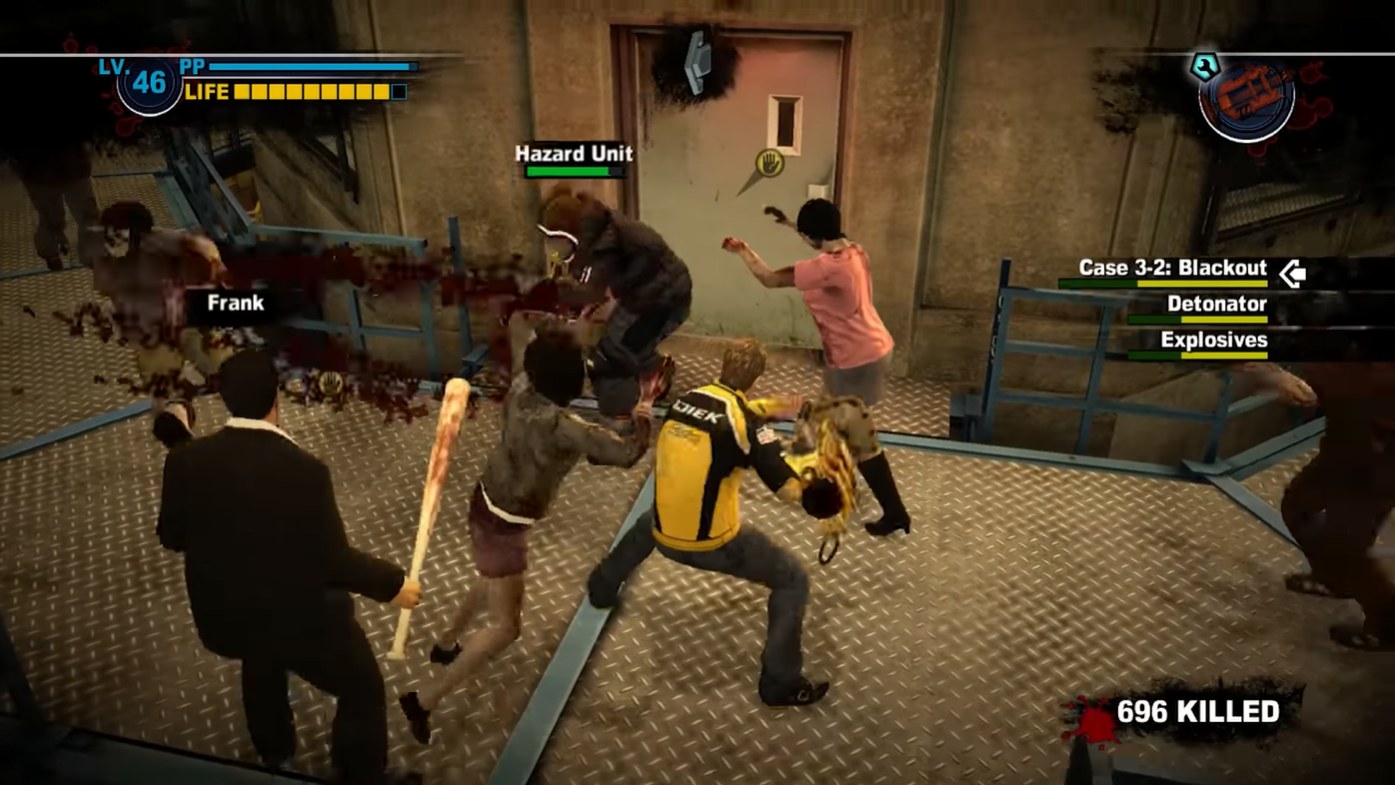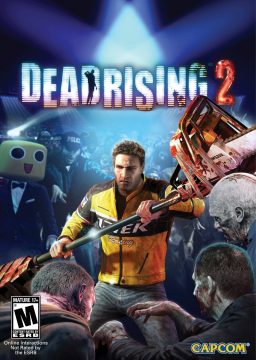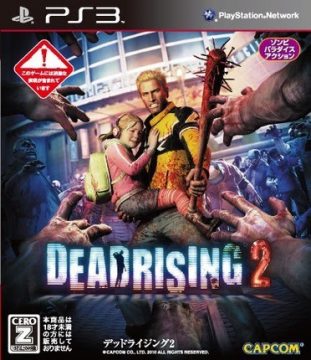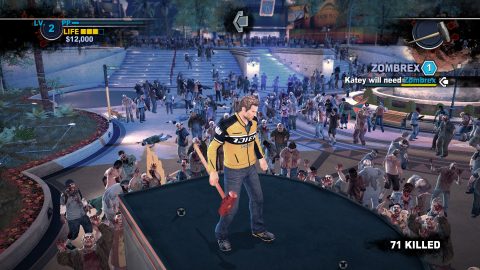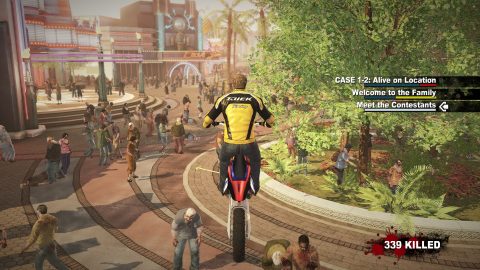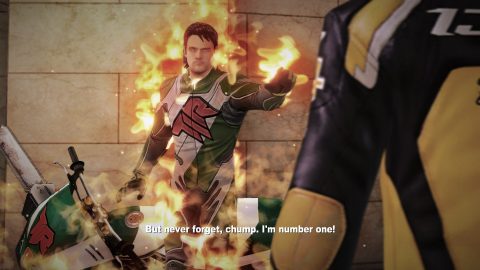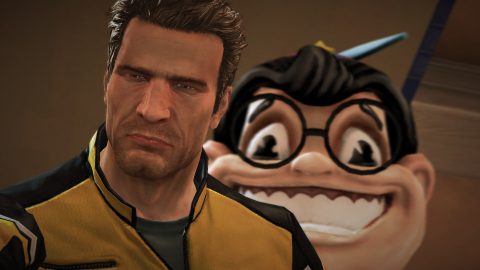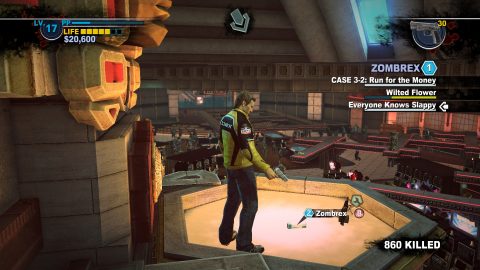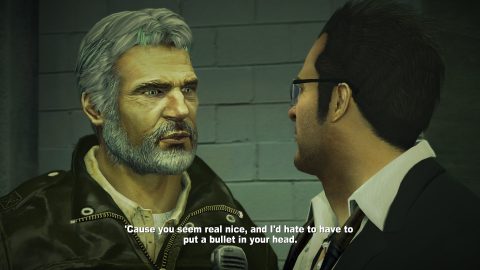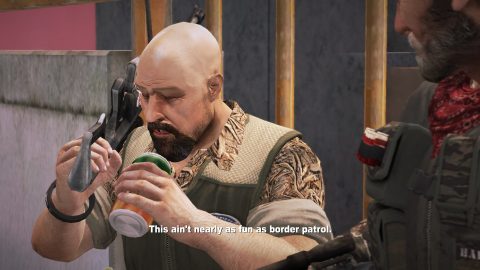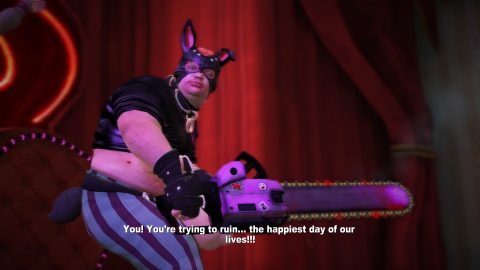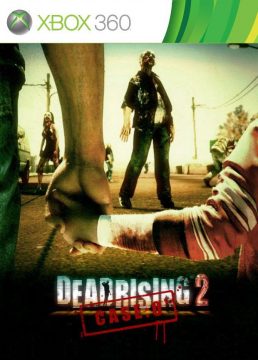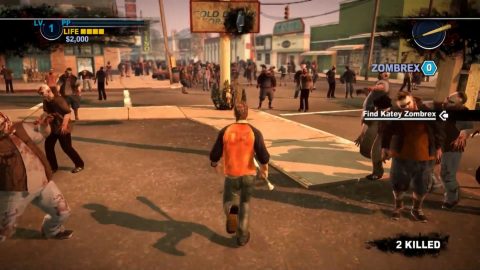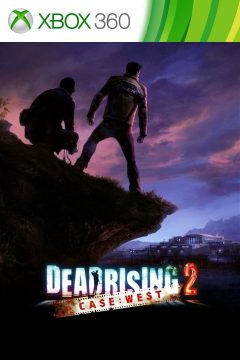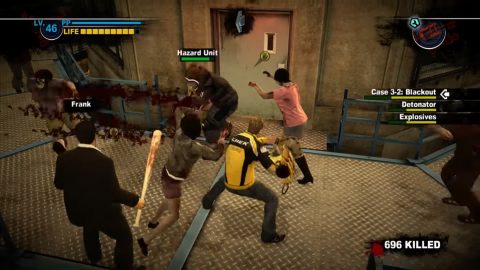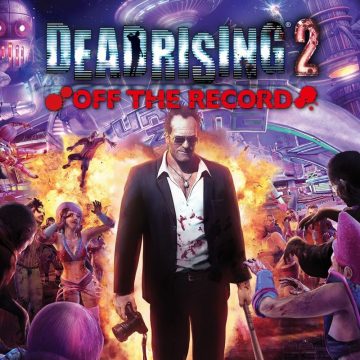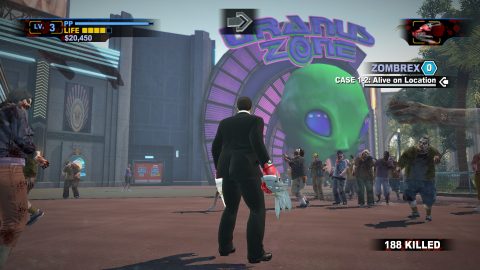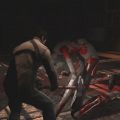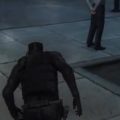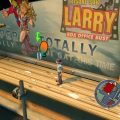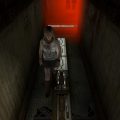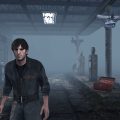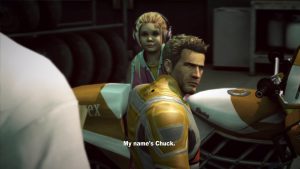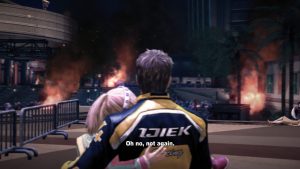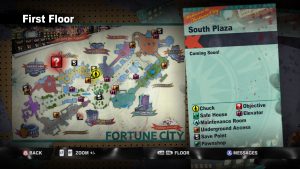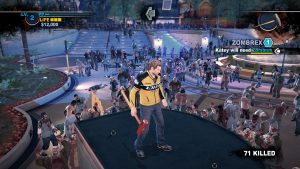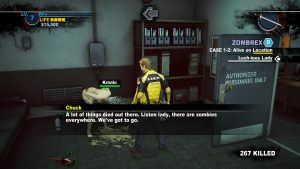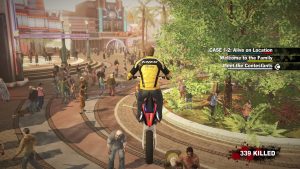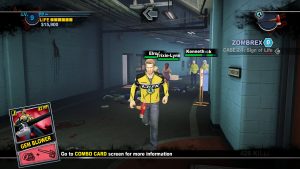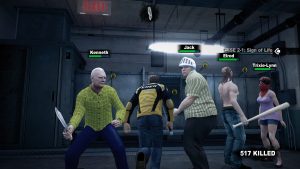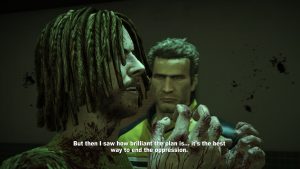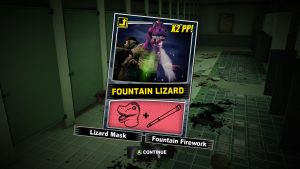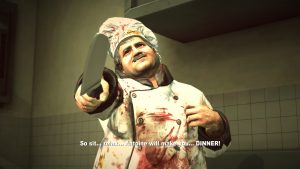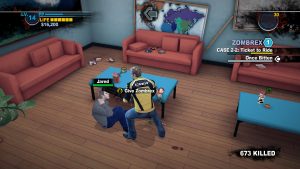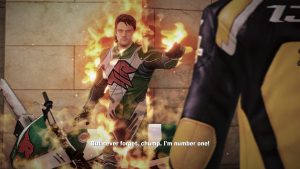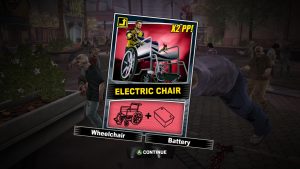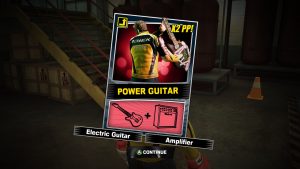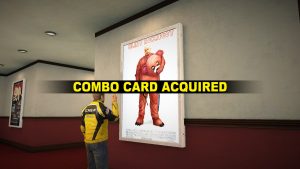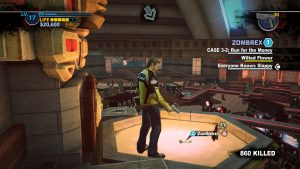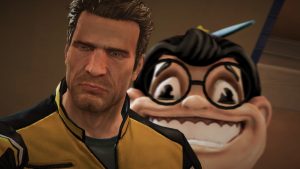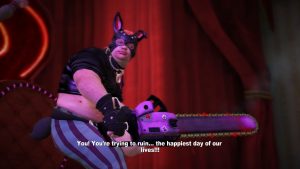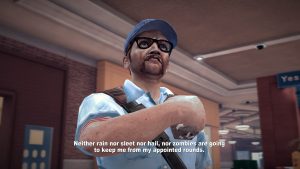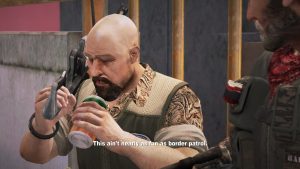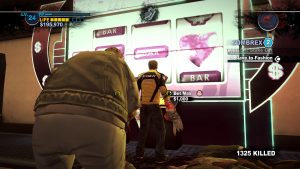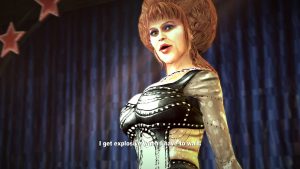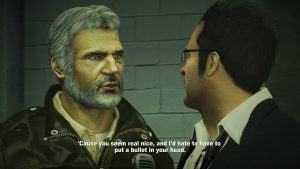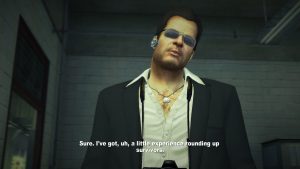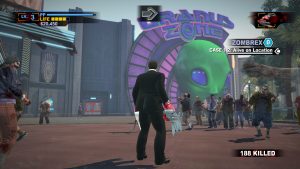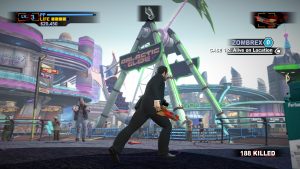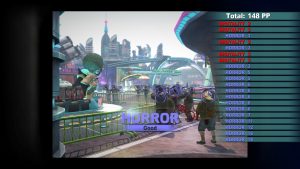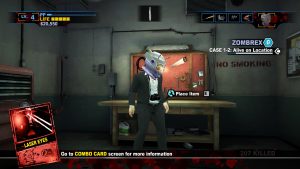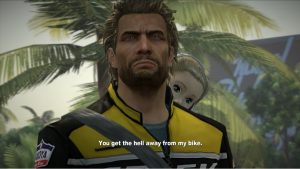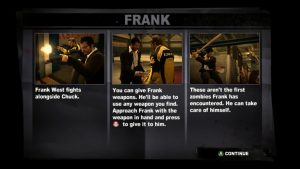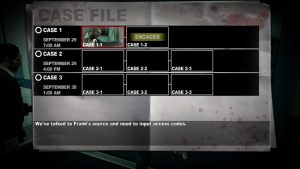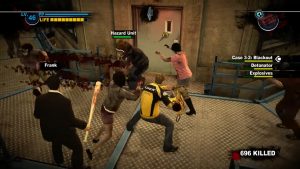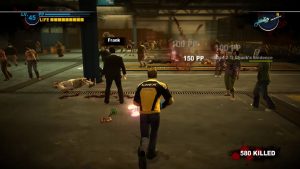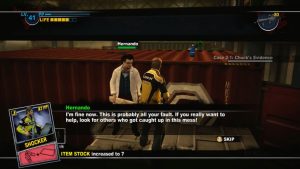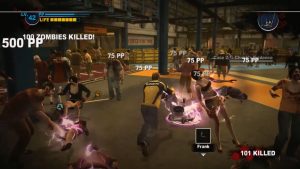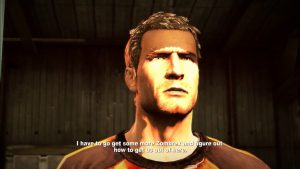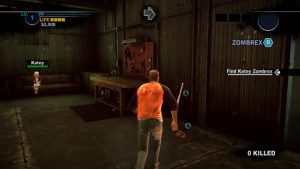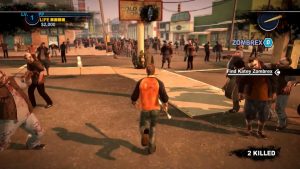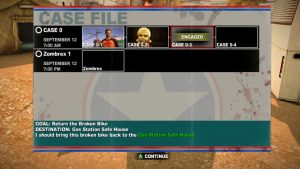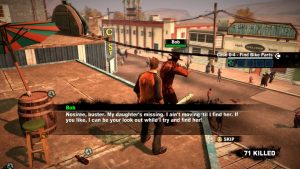- Dead Rising
- Dead Rising 2
- Dead Rising 3
- Dead Rising 4
Dead Rising 2, released in September and October 2010, was a hotly anticipated sequel. It had been four years since Dead Rising hit the shelves, and, although the original had been a fresh and surprising success for many, there was hope that a sequel might smooth out a lot of issues from the series’ first installment. Not only that, but the second game would leave Xbox exclusivity behind in the hopes that embracing multiple platforms would turn it into the chart topping, international hit that Capcom and its original producer Keiji Inafune (of Mega Man fame) had always hoped for. As well, the series approach to finding this success paints an interesting picture of the times, and how the industry as a whole was trying to reach different markets and bridge cultural and stylistic divides between a growing multitude of gamers around the world.
Speaking on the sequel’s development with IGN in 2012, Keiji Inafune would say “[With the original Dead Rising] my aim was for my team in Japan to understand how to make a game that appeals to the West – it was a baby step, especially in Japan, where zombies are not particularly popular, towards getting them to understand what zombies are, and where the black humour stems from.” In later interviews, Inafune admitted that his teams goal was to surpass the success of Resident Evil, explaining that if his team didn’t set a high goal, they might not have the motivation to push the development. So, in a lot of ways, despite being the offbeat and sillier little brother born in Resident Evil’s shadow, it was this pressure and push to be something different, yet familiar, and meaningful – not to mention each team’s lofty ambitions, their flexible sensibilities and willingness to rediscover and perfect the game’s formula – that would continue to shape series’ development.
Instead of being developed in house at Capcom, Dead Rising 2 would be handed off to Blue Castle Games (who would eventually become Capcom Vancouver) in Canada, who were itching to prove themselves and what they could do beyond sports games (their previous game being The Bigs for 2K Sports). The team was tasked with building their own version of Dead Rising from scratch, but were also aided by members from the old Dead Rising team, Inafune, and Capcom’s former global head of research and development. More was promised, the odd duck was becoming a franchise, and Dead Rising 2 would ultimately spread itself out over a main game, and three additional experiences – a prequel episode (Dead Rising 2: Case Zero), a DLC post-game episode (Dead Rising 2:Case West), and an entire remake and reinterpretation of the events from the main game (Dead Rising 2: Off the Record).
In general though, the quality of life improvements and added systems (combing weapons, a money system, online co-op support, and more forgiving save system) are more than enough to elevate and compliment the familiar, yet uniquely Dead Rising experience. Excess is once again the name of the game, and what worked so well for the American Mall environment works again for the “Las Vegas” style locale – with the exchange of consumerism for “sin” never feeling off tone or too gratuitous from the original sensibility wise. Leaning into the weapon-wackiness make the sequel a fantastic standalone experience, and a standout for the series as a whole.
Taking place five years after the zombie outbreak from the first game, players take control of Chuck Greene, an ex-motocross rider who’s come to the fictional town of Fortune City, Nevada, to participate in a zombie-killing, reality TV show: Terror is Reality (which is pretty much window dressing for the game’s online, multiplayer mode). It’s not for the fame, however, but money, as Chuck needs a steady supply of Zombrex (medicine meant to keep the infected from “turning”) for his daughter, Katey. While the game opens with the player participating a quick mini game from the online, competitive multiplayer mode to kick the story off, it’s not long before the zombies get out, and the he original “72 Hour Mode” from the first game returns in full form.
After the ensuing outbreak, Chuck has to survive for three days (six in game hours) while also untangling himself from unfolding events, and, by and large, the game plays similarly to the first. Players can venture out into the zombie infested city to rescue other survivors, defeat the “Psychopath” mini bosses who have gone insane since the outbreak, and complete major missions that, when completed, advance the game’s main story. In addition, however, Chuck has to get his hands on a daily dose of Zombrex for his daughter, by either finding it or buying it, or she won’t survive until the military arrives.
At first, this feels like Chuck might be juggling two major tasks at once, and at all times (both getting to the bottom of the outbreak AND finding Zombrex for his daughter), but the resulting push and pull between big tasks feels balanced and not overly taxing. Needing Zombrex hangs over your head as a general unknown (players know they need it at a certain time, but, for the most part) aren’t given a directed mission for getting it), however, players can be rewarded a dose after rescuing a survivor, get a tip on where some could be from a side mission, or stumble upon it out in the wild. Finding it on your own can feel big and exciting (like discovering something worth more than money or a good weapon), but players can just as easily forget about getting it until time is running out and more info trickles its way in through various sources.
Although some fans might miss the smart talking, more self-centered and selfish Frank West (until Case West and Off the Record), the team at Blue Castle wanted to put their own spin on the franchise, and didn’t want newcomers to feel like they were missing anything if they hadn’t played the first game. So, the decision for players take control of Chuck was multifaceted. Though a little less silly, Chuck is a differently capable every-man. Instead of carrying around a camera and snapping photos for extra experience (the photography mode from the first game was cut entirely from the second), Chuck utilizes the various maintenance rooms around the map, and his handiness with tools and fixing things, to turn weapons and items into more powerful, and zanier, super-weapons.
Where snapping photographs was fun, silly, and occasionally dangerous, it could ultimately feel pointless – like a side-activity from the game’s main sandbox focus, killing zombies. Now, however, players are treated to “combo cards”, which are more or less a two-step recipe that reveals various weapon combinations for the player to make use of. There’s 50 in the game to unlock and find, and even though it’s not necessary to have the combo card to craft the item in question, the end result feels like a natural system that feeds into the other major half of the game’s main appeal, exploration and discovery.
Different maintenance rooms often have new combinations of objects laying around, so when you walk into one with a lead pipe and fireworks nearby, you really feel like you’re discovering two things at once (a new place for safety, and a new, previously unknown super-weapon formula to take with you). Players can find and unlock combo cards by examining items or posters in the world, defeating psychopaths and saving survivors, and leveling up; and the weapons rarely, if ever, disappoint. Weapons still wear down and break over time, but strapping chainsaws to a kayak paddle, or a battery to a Blanka mask from Street Fighter, or a lawn mower to a wheelchair make all the difference in terms of making the player feel excited and empowered enough to continue surviving.
Another big addition to the game’s core formula, as well, was the inclusion of and support for online co-op. While not offering any kind of split-screen, one player could invite another into their 72 hour mode (with both getting XP, but only one retaining story progress), which would place two Chuck Greene’s into Fortune City to run around at their leisure. While playing with a friend might cut some of the tension and terror out from the main game, the added option undoubtedly gives players more ways to engage and enjoy the sandbox nature of the game on their own terms.
Unfortunately, the included multiplayer mode Terror is Reality is virtually unplayable now, as there’s no way to experience the mode solo and with bots – although players can still invite friends to a private match from their friends list, there’s really no chance of finding people hosting / looking to join a game anymore. While alive though, players would join a room with three other players, and compete in a series of mini-games (from a pool of 9 potential games that involved killing or dressing up zombies), to earn cash to use in the main game. While feeling mostly tacked on, the randomness and frantic gratuity shined for some within the Mario Party-esque mini games, and it was apparent the developers were throwing everything at the wall to make the game fun for as many kinds of players as possible (with the competitive, short-burst style of play operating in stark contrast to the slower, more slow burn style of the game’s main 72 hour mode).
The main game, however, is another expansive 15-40 hour experience depending on how much a player feels like seeing, completing, replaying, achievement hunting, or wiling about solo or co-op. While the story might creep along at its own, developing pace (what with the fixed, in game time clock moving along at its own speed), there’s twists galore and an enjoyable blending of made-for-tv-movie character drama with B-movie horror, humor, gore, and gratuitousness. There’s a new cast of characters, but the world building from the first game carries over. There’s more going on beneath the surface, and, by the end, the locale feels appropriately grounded within the real meat of the story. “Las Vegas” isn’t just a vapid backdrop, but an excuse to explore how money might affect a semi-ongoing zombie apocalypse, and showcase the types of people that would show up just to profit.
Familiar mechanics return to push the player through to the story’s finale, with relatively simple systems feeding back into the relatively simple loop of “kill more to explore more” and “explore more to kill more”, but everything is supported by an arcadey kind of empowerment that only gets more fun the more fuel you add to the fire. Magazines can be found at stands or book stores to improve healing, make weapons last longer, and even improve a players odds at winning at gambling. Combining food items in blenders makes power-up giving juice blends that can make Chuck run fast, zombies avoid him, spit fire, or induce vomiting for a few minutes. And the newly added money system ends up being a surprisingly useful support system. Players keep money between playthroughs, and can be spent on minigames or gambling around the strip, but also to purchase weapons on the fly, expensive vehicles, or important items like Zombrex at the four Pawnshops around the map.
While Fortune City feels as appropriately packed with even more activities, land marks, and set pieces than the previous game, however, there’s still plenty that feels like it hasn’t changed much in the sequel. While most weapons now have two kinds of attack animations now (a press button to attack, and hold button to attack), players will either be mashing one button to slow carve their way through a horde, playing fall down / get up red light green light against a gun wielding enemy’s auto-aim, or just outright running past everything because time feels more important than killing things to level up. Gunplay has improved substantially (with the player now being able to aim and move at the same time, and more fluidly), but it was more fun getting to see how different combo weapons like a jewelry shooting leaf blower, exploding football, or Plate Launcher stack up against the prototypical shotgun and machine gun.
Graphically, models are still a bit blocky and similar (I kept feeling like everyone has Chuck’s hands), but everything feels pretty standard for the era. There’s smoke and fire particle effects now (small details missing from the first game that really made some cutscenes feel empty), faces and lipsync have improved, and the lighting engine has gotten a bit of an upgrade. The atmosphere feels a bit darker, mostly to make the bright lights, neon, and spectacle really pop, and the game boasts a pretty steady framerate for also promising 7000 + zombies on screen at once. The trade off, being the splattered on blood textures, and semi low res and low detail look of everything on the whole, but even some of the rougher cutscenes and close ups couldn’t take me out of the otherwise loud, explosive, and gruesome world of Fortune City.
The sound design, much like the previous game, is filled with a wonderful mix of easy listening, “fades into the background” mall music – low key, background tracks and sounds that fade from your attention to poke fun at the “mundane” zombie killing – paired against high energy, genre standouts to amp up boss fights and climactic moments – from darkly tuned and heavy, hard rock or electronic tracks, to bright and poppy, glam pop depending on the fight (there’s not a ton of variety between everything, but check out Terror is Reality compared to Diva Comeback Amore). Every Casino and section of mall also has its own theme music, making each locale feel different, and subtly unique, if you pay attention.
There’s also lots of other, small but noticeable quality of life improvements between the two games, everything from the UI and HUD has been tweaked and improved slightly (from Chuck’s digital watch to the quest text now showing up under each message), and even the survivor AI feels appropriately tuned (with everyone feeling more quick moving, dependable, and harder to stay stuck than before). Overall, the team at Blue Castle did a fantastic job of rebuilding the look and feel of the first game with their own engine, while also working to address and smooth issues from the previous game.
However, the danger of doing too much too similarly means there’s are some negatives that have persisted between games, and feel baked into the formula at this point. Saving survivors still feels a bit basic, frustrating, or too begins to feel like a chore after long enough. While I appreciate the occasional nuance and desperation it can make you feel, it’s rarely fun running past someone asking for help, then having them ask for a drink or a friend so they’ll follow you, then having to run the same, overly familiar backtracking route to get them to safety.
Psychopaths, on the other hand, are always fun to find and see, but really don’t function as much more than action puzzles with basic cycles, too perfect aim, and where the main solution feels like exploiting the AI or bringing as many guns as possible to the showdown. Some fights felt like a fun dance once you unlocked the ability to dodge roll, and get patient enough to swing once, roll away, and repeat, but others felt like boring brick walls, with sudden difficulty spikes, that felt less than beatable without an excess of health and inventory slots. The player might have a lot of tools and levels at their disposal, but there’s nothing makes it easier or quicker to get up from being knocked down, and not much Chuck can do to really avoid most attacks.
While the save system now gives players more slots to play with from the get go, the lack of checkpoints, and sudden and harsh difficulty that forces restarts still might be one of the most constant complaints from critics and newcomers to the series. Without checkpoints, and a fixed timer, forgetting to save, or worse, saving once a story quest might be unwinnable because of the clock, can feel overly punishing for a casual player, or someone who just wants to see the story through without a lot of grinding (as it’s not long before enemies are all carrying firearms, and have perfect aim).
It might not be the kind of accessible experience everyone is up for, but it’s still a wildly unique and rewarding one. Players might just have to meet the game on its own terms, and have a willingness to engage with all its pieces. The real magic in the overall formula isn’t how deep every system is, but the way everything comes together. A lot can feel similar and familiar (most gamers have done a fetch quest and maybe even tried a Yakuza game before), but when you’re running out of time, weapons, and health, trying to save people, and finish a story mission? Every small decision and encounter feels weighty and tense.
Am I going too slow? Do I need to be looking for health? Should I not be juggling so much? Do I give this person the Zombrex I have instead of my daughter? Do I have time for more? Will I be able to find more as easily? When the walls start closing in, every choice feels more important by magnitudes, and everything you learn along the way can be the difference between success and failure. Dead Rising 2 is a game that can be frustrating, slow, and simple, but mostly only in pieces. Any one piece of that puzzle might not feel satisfyingly fresh, but those who invest and give the whole, big picture experience a chance will certainly find something that sticks with them.
Finally though, where the original Dead Rising saw itself change a great deal before launch, Dead Rising 2 would re-imagine itself quite a bit after its release (resulting in the extra episode Dead Rising 2: Case West and an entire re-imagining with Dead Rising 2: Off the Record). At the time, the thinking was for Dead Rising 2’s developers to build as many on ramps and entry points for newcomers and old fans to get on board or back into the series as possible. But playing the prequel, DLC, and remake now, however, can feel expensive, samey, and difficult (the prequel and extra episode DLC weren’t included in the remaster, and are currently only available on the Microsoft store for the Xbox 360 and Windows PCs), and while it can be fun for the full picture, each game is itself part success, part failure.
Where the first game had a successful demo, Dead Rising 2: Case Zero was released in August 2010 as a downloadble, standalone game that lasts about an hour. Taking place two years after Dead Rising, and three years before the events of Dead Rising 2, players would get introduced to Chuck Greene, the new money and combo card system, and having to find Zombrex for Chuck’s daughter, Katey. After fleeing a zombie outbreak the two get stranded, and have to find Zombrex and means of escape from the small ghost town of Still Creek. Despite having rougher graphics and smaller focus, players would get to carry some of their experience over and could unlock some costumes for Dead Rising 2, and this was enough to get the game downloaded 300,000 times during its first week of release, making it the fastest selling game on Xbox Live Arcade.
While short, the episode puts Chuck in an unknown place, and captures that perfect verticle slice of Dead Rising moments. There’s high drama for the characters, multiple endings, feeling lost and underpowered, and the experience is well crafted even if the area is a little more bare boned and quiet compared to Fortune City. Case Zero still works as a decent bridge between Dead Rising and Dead Rising 2, but might remain slightly forgettable for not actually adding much or building towards the series’ larger narrative.
The only post game DLC for Dead Rising 2 was released worldwide in December 2010 with Dead Rising 2: Case West. Serving as an epilogue to one of the main endings for Dead Rising 2, the game sees the return of Frank West, who shows up to combine forces and investigate a facility west of Fortune City. There’s some new combo weapons and costumes (though they can’t be brought back into Dead Rising 2), but the real draw is having Frank join Chuck for the two hour or so, post end-game series of missions. If in single player, an AI Frank west will run around killing zombies alongside Chuck, and in Co-Op, player two gets to be Frank and use his slightly different move set. Photography returns (though without bonus points for horror, erotica and etc., it feels a bit underwhelming), which ups the achievement count, but the main focus is on the two person team up, and plot wrap up.
The research facility is densely packed with zombies and elite guards, giving things a fight-heavy, end-game feel. The late game combo weapons can be fun and powerful, but on the whole, the labs and areas are all forward, with no fanfare or side fun. While this feels like the place for heavy plot and great buddy cop moments, some of both feel hampered by the episodes pacing, which sees players solving important cases, then being forced to wait and help survivors (who, thankfully can escort themselves out of the facility) until the next case becomes available.
Players are given lots of time to do everything (in part because there’s only two endings, and failure really means failure), but, while this felt a little more welcome in the main games, and served to build in some variety and give a natural ebb and flow to the action, here, it feels a little exhaustive and unwelcome. While having the most cross-plot between the two games, players don’t import their own Chuck and his levels and costumes into the game from their playthrough of Dead Rising 2 (making the experience feel a bit removed), and trying to fit everything from past games into this short and straight forward of an episode, in the end, leaves Case West feeling a little bloated, and lacking. There’s not enough big story development, or growth and fun between our protagonists, so, on the whole, Case West can feel a bit like a skippable misfire.
The last game to be a part of Dead Rising 2 was released in October 2011, with Dead Rising 2: Off the Record. Blue Castle Games were under contract to release a director’s cut of Dead Rising 2, but after seeing how many fans missed Frank West, the team pitched things as a complete re-imagining of the events of Dead Rising 2, starring Frank. The game would see some engine and quality of life improvements, add checkpoint saves and a Sandbox mode (which removes time, and the story, but gives players side challenges, solo or co op, as a means of exploring the game, its survivors and psychopaths, in a less structured format), and while the plot remains mostly unchanged, and plenty of the game feels like a shot for shot redo with a Frank West skin, there’s still enough fan service and fun to feel like a worthwhile experience for Dead Rising fans who missed Frank, or newcomers who might want the fullest Dead Rising experience yet.
After the events of Dead Rising, and squandering his fame, Frank sees the situation at Fortune City as a chance to revive his journalism career. Frank also needs the Zombrex every 24 hours now, and his game sees different survivors are in different places, some things happen at different times, alongside new, powerful, and some easier to grind with combo cards, and a new zone to explore (the sci-fi themed, previously closed, Uranus Park). While Frank’s motivations to redeem his career might not feel as sympathetic as Chuck Greene’s, the reasoning is enough of an angle to bring back the old photography mode. Photos still feel a bit secondary and superfluous, but still, it remains a new lens to view some fun moments through. While most of the game can feel like a fan fiction episode, there’s some good laughs, another coat of polish, and more ways to play than ever. However, for some, slogging through another 13-20 experience that’s so similar, and only a year removed from the previous games release, wasn’t enough to bring them back.
By this point in the series, and for any who might’ve struggled to play every game so far, any flaws felt within the core experience were also sticking out like a sore thumb. For some, Frank West’s return was more than enough to be the cherry on top, and highlight how just the right tweak can make the all the difference when it comes to DLC. For others, this was “franchise fatigue”, rearing its ugly to remind long time players that some parts of the game never worked well enough together to begin with.
